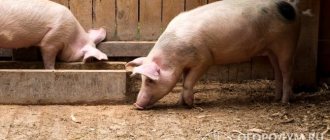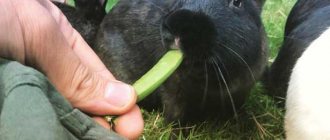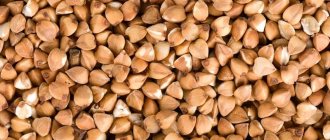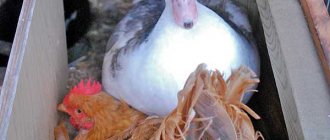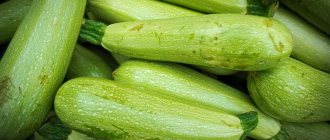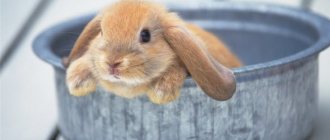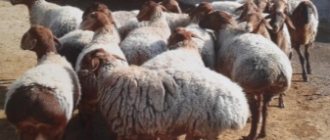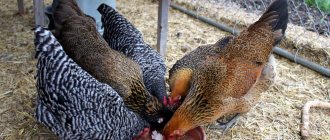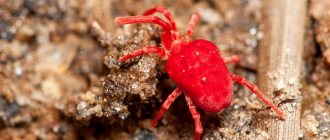Domestic rabbits are demanding animals with sensitive stomachs, which is why it is important for breeders to know what they should be fed. In the summer, they should be fed fruits, vegetables and grains.
Corn crop stands out for its nutritional and beneficial properties. However, before feeding, you need to find out whether and in what way corn leaves, cobs and grains can be given to rabbits.
Can I give them corn leaves?
Tops with leaves are also suitable for use by long-eared pets in combination with other types of greens. It will not be the main food for animals, but it is necessary for their saturation, accumulation and conservation of energy, as well as for supplying rabbits with vitamins.
The leaves must be fresh and of high quality, not spoiled by parasites, otherwise there is a risk of disease.
Can rabbits eat corn on the cob?
Corn cobs and stalks are the most nutritious part of the grain. They must be included in the rabbit menu. It is important to thoroughly wash the cobs that will be eaten by animals, then dry them naturally.
Whole grain
Ripe cereal is usually given in crushed form, because even rabbit teeth cannot bite through hard grains. Pets gnaw off the soft part, and the rest is left to rot in the feeder.
Ripe grains are crushed and then soaked in cold water. Animals will not refuse to eat boiled corn.
The daily consumption rate is:
- 70 g for young animals;
- 150 g for adults.
The mass fraction of corn should not exceed 15-20% of the grain mixture, but for meat breeds during the fattening period it is increased to 50-75%. It is allowed to give cereal to lactating females because they need a lot of energy.
Heavy product for the rabbit's gastrointestinal tract
The absence of smooth muscles complicates the patency of the rabbit's gastrointestinal tract, which is ensured only by the arrival of new portions of food. Therefore, any problems associated with intestinal blockage or bloating are very serious and can be fatal.
The high carbohydrate content in any food you plan to give to rabbits contributes to the rapid development of intestinal bacteria and provokes excessive gas formation.
Bloating is a very serious problem that leads to a rapid deterioration in the general condition of the animal and its death.
Read more in the article “Causes and treatment of bloating in rabbits.”
It is the high carbohydrate content that raises doubts about the advisability of regularly feeding pets with this product, although corn can be used as a food additive.
Now it’s clear whether rabbits can eat corn, but it remains to figure out its quantity.
The value of corn in the diet of rabbits
Corn can and even should be included in the diet of rabbits. In private farms, mature and young grains on the cob, leaves and even plant stems can be used for this. However, the value of a product is determined by its composition and the need of animals for certain substances at different periods of life.
If we talk about grain, it is a high-energy product. 1 kg contains 1.34 feed units, which makes its use very profitable on the farm. Corn grain contains in 100 g:
- up to 8-11% proteins;
- 60-67% carbohydrates;
- 4-5% fat;
- vitamins A, B, C, E, PP;
- iron, potassium, calcium, magnesium, phosphorus, zinc, selenium, etc.;
- a number of amino acids;
- up to 2% fiber.
The energy value of such feed is 314-338.4 kcal for every 100 g of grain. Rabbits eat corn very well. But with all this, such food is not complete and can sometimes be unsafe for their health.
It has little protein, a lot of fat, and almost no fiber. Therefore, corn for rabbits cannot be the only concentrate in the diet. It must be properly combined with other products on the farm to provide the animals with balanced nutrition. Such food can be included in the diet of young animals from 1-2 months of age, not earlier.
Corn leaves are, first of all, fiber necessary for the functioning of the gastrointestinal tract of rabbits, as well as vitamins and minerals. When fresh, they are excellent for distribution to livestock in the summer, or for storing for future use in the winter. Green mass alone or together with young ears is the raw material for making silage. Corn leaves can be given to baby rabbits as soon as they leave the nest and begin to taste adult food.
The nutritional value of the stems is low. However, they can be offered to adult animals so that they can grind their teeth on them and damage the cages less if they are made of wood. As a rule, stems are not offered to young animals.
Benefit
Corn contains a lot of useful substances that help rabbits gain weight, normalize the gastrointestinal tract, and make the coat smooth and shiny.
The grains of this culture contain:
- vitamins;
- minerals;
- complex and simple carbohydrates;
- polyunsaturated fatty acids;
- amino acids;
- fiber.
Corn grits are the only product that contains gold.
Corn serves as a kind of grindstone for rabbits. The presence of grain in the feeder frees the owner from searching for young twigs or bark. Feeding corn does not incur significant financial costs. The culture is affordable and stores well all year round.
Corn can be harmful!
The main goal in keeping rabbits is to obtain high-quality fur and nutritious meat. Corn kernels can contribute to serious gastrointestinal problems. This is due to the small amount of fiber, which is necessary for the proper functioning of the digestive tract, and too much carbohydrate (starch).
The intestines are not adapted to such a heavy load, although rabbits eat grain with great appetite. Overfeeding a rabbit with corn will cause the starch to be digested in the small intestine, providing large amounts of sugar and energy, which contributes to the development of obesity in the animals. Therefore, the answer to the main question of whether corn can be given to rabbits is ambiguous.
Excess starch will increase gas fermentation, multiplying abnormal fermenting bacteria. In addition to gassing, these bacteria produce large amounts of toxins that are detrimental to the functioning of the rabbit's body, but primarily interfere with intestinal function. Excess gas will not only stop work in the intestines, but will also lead to bloating, which is often certain death for the animal.
Harm of corn for rabbits:
- high calorie content;
- low calcium content;
- lack of protein.
Both decorative and industrial rabbits can be given corn in moderation or by properly preparing the grain immediately before feeding (soak for 2 hours in clean water).
Beneficial features
Corn (or maize) is a real storehouse of nutrients necessary for the growth and development of a rabbit.
The advantages of this type of food include:
- High energy value (approximately 44 kcal per 100 g of grains), represented primarily by carbohydrates - complex (starch, dietary fiber) and simple (fructose, sucrose and glucose);
- Rich vitamin composition (various parts of the plant contain retinol, beta-carotene, tocopherol, thiamine, riboflavin, pantothenic, nicotinic and folic acids, pyridoxine, cobalamin, biotin and choline);
- The presence of important minerals (potassium, calcium, magnesium, silicon, sodium, phosphorus, sulfur, chlorine, and also in smaller quantities zinc, iodine, selenium, chromium, fluorine, nickel, molybdenum, cobalt, manganese, iron, boron, copper, vanadium and even gold);
- The presence of polyunsaturated fatty acids (linoleic and linolenic) in the product;
- A wide range of essential and essential amino acids in the product (among the former are aspartic and glutamic acids, alanine, glycine, proline, serine, tyrosine and cysteine, the latter include arginine, valine, histidine, isoleucine, leucine, lysine, methionine, theonine, tryptophan and phenylalanine);
- High content of fiber in the fruits of the plant , which is necessary for rabbits to maintain intestinal tone;
- The ability of the rabbit’s gastrointestinal tract to easily digest the product and absorb the nutrients it contains;
- The beneficial effect of hard grains on the animal’s teeth , which need constant grinding (the presence of corn in the feed can even save the farmer from the need to look for and put twigs and bark of fruit and other trees into cages).
Additional advantages of corn include its availability, relatively low cost during the peak season and the ability to easily prepare nutritious food for the winter.
A properly balanced complex of biologically active substances contained in corn contributes not only to the weight gain of rabbits, the normal functioning of their intestines and the treatment of teeth.
But also to improve the quality of fur, which, as you know, is one of the main goals of breeding these fur-bearing animals.
In what form is it best to feed corn?
There are many ways to feed corn to rabbits. Their choice depends on the season and geographical location of the farm, as well as on whether the plant is grown on its own plot, when you can be sure of its quality, or purchased in a retail chain.
So, for example, as a wonderful vitamin supplement for animals, you can use green maize shoots that have gained a height of about ten centimeters (at this time the beds are usually thinned out anyway).
Further, when young ears appear, they can be sent to the rabbitry directly from the beds, raw, whole, and without even clearing them of the leaves covering the grain. Such food will allow the animals to gain weight very well in the autumn, that is, just before the slaughter of rabbits for meat.
A more common way to use fresh corn as a feed crop is through pre-treatment. The cobs are cleared of leaves, washed under running water and thoroughly dried in the sun.
After this, the animals are given whole or chopped into several parts, but in the latter case, chopping should be carried out immediately before serving to prevent spoilage of the product. The leaves are also washed, dried, crushed and given separately from the grains.
After washing, it is recommended to pour purchased cobs with boiling water to destroy pathogenic microflora that may have accumulated in them during harvesting and transportation.
Sweet corn has one unpleasant feature. The simple carbohydrates included in its composition are very quickly transformed into cellulose, as a result of which the tender cobs become literally wooden. If this happens, it is recommended to first soak the hard grains in water overnight and only then give them to the rabbits.
If it is best to give white (young) corn to animals raw, then old cobs can be boiled simply until tender or until they become porridge.
Plants grown in environmentally questionable regions are also usually used in boiled form. Of course, not all harmful substances contained in the air and in the ground near highways and industrial zones are destroyed as a result of heat treatment.
You should also know that corn is included in almost all ready-made feed for rabbits, both in the form of grain mixtures and in granulated (pressed) form.
This grain usually accounts for at least one-fourth of the composition of such feeds, although in some brands its percentage reaches half or even three-quarters.
The digestive system of baby rabbits is too weak to process grains, so at first only green parts of maize leaves and shoots can be added to the feed of young animals. Grains, even boiled in the form of porridge, are strictly contraindicated for rabbits.
For young animals
If the first one and a half to two months of life, rabbits should receive exclusively mother's milk for food, then, starting from the seventh week of life, their diet begins to gradually diversify.
But even in this form, corn should be given to rabbits in doses and in small quantities; it is better to do this no more than once or twice a week.
Corn cobs are introduced into the diet of young animals gradually; it is better to postpone such complementary feeding at least until the baby rabbits reach four months of age, when the animals are gradually transferred to the feeding pattern usual for adults.
You also need to know that it is maize that causes such negative reactions in young rabbits as:
- intestinal disorders;
- change in the consistency of stool;
- vomit;
- various forms of allergies;
- changes in behavior - lethargy, lack of activity, apathy.
With any of these symptoms, cereal should be immediately excluded from the diet of young animals, but even if the rabbits tolerate the food well, the daily dose of corn grains per animal should not be more than 80 grams.
Did you know that the fattest rabbit in the world lives in the English city of Worcester? The mammal weighs a quarter of a hundredweight and is comparable in size to a six-year-old child. This monster destroys about four tons of carrots per year, and in general, keeping the pet costs its owners more than three thousand pounds sterling.
For adults
In the nutrition of adult rabbits, corn takes on priority importance during the period of preparation of the herd for slaughter.
Thus, to quickly gain live weight, one and a half to two months before the expected slaughter, corn grains are introduced into the herd’s diet in an amount of 60 to 150 g per head daily.
Moreover, as the control date approaches, this dose gradually increases from the lower limit of the specified range to the upper one.
The rest of the time, in order to avoid the development of obesity and other pathologies, the share of maize in the diet of rabbits should not exceed 10-15% of the total food.
Baby rabbits
If an increased amount of high-calorie cereals should not be present in the diet of adult rabbits, then an exception is made for rabbits during pregnancy.
It is thanks to the high nutritional value of corn that it is possible to achieve faster formation of embryos and, accordingly, the birth of large and healthy rabbits.
Therefore, corn grains are given in increased quantities to pregnant (pregnant) rabbits starting from the fourth week of pregnancy (it is during this period that the internal organs of the embryos are almost formed and intensive fetal growth begins).
During the mating period, experienced farmers, on the contrary, try to completely exclude corn from the diet of both female and male rabbits. From such food, animals become lethargic, lazy and apathetic, which prevents them from realizing their reproductive function.
This circumstance, by the way, once again confirms that maize is not a healthy food for rabbits, as is commonly said.
However, in order not to harm the mother’s body, the total volume of all grains in her diet should not exceed 100-150 g per day (that is, in fact, we are talking about the same parameters as when fattening rabbits for slaughter).
At the same time, it is also necessary to increase the proportion of greens and vegetables, a source of vitamins and other nutrients in the form familiar to the rabbit’s body.
After birth, corn is kept in the rabbit’s diet for some time in the same amount in order to increase the fat content and nutritional properties of the milk and accelerate the growth of the rabbits.
But, starting from the eighth day, the proportion of this cereal must be gradually reduced: by this time the babies should already be strong enough, and it is very important to protect the nursing mother from obesity.
Unlike pure corn, silage prepared with a small amount of the tops of this plant is indeed a very valuable and nutritious product that can replenish the vitamin needs of rabbits throughout the cold season.
How and how much to give
Corn must be introduced to rabbits gradually so that their gastrointestinal tract gets used to it. But before feeding, the grain or cobs must be washed with water. If possible, grains are ground into powder.
If you make a large supply of food, then after a while the food will taste bitter and the animals may not want to eat it. But this depends on the individual character of the “eared”. In moderation, corn is easily digested and saturates the body with carbohydrates, proteins and fiber.
For female rabbits during pregnancy and after giving birth
Pregnant females need to be fed generously. The embryo begins to actively develop only in the third stage of pregnancy. The owner of these animals will have to pay special attention to their diet. If this is ignored, then there will be no healthy offspring, and this will negatively affect the entire livestock in the future. Feeding:
- During such an important period, female rabbits are given maize cobs.
- The corn grain must be crushed.
- The daily norm is from 100 to 150 g. per female.
- Diversify the food with grass and other vegetables rich in vitamins.
Attention! Corn should not be given to a female who is preparing for mating. Due to rapid fat deposits, the rabbit will cease to be interested in procreation.
Young animals should not be given boiled corn
For young animals
Boiled corn should not be given to young rabbits. Maize leaves are fed in small quantities. Young rodents do not eat the same foods that adults feed on. Cereals should be young and this product should be introduced into the diet gradually, paying attention to the behavior of young animals. Rules:
- For cubs aged 45-60 days, the diet is diluted with plant food.
- During this period, small rodents love maize shoots because they contain fiber and vitamins in large quantities.
- 80 grams per head. feed per day.
Warning! You cannot feed young animals if they exhibit vomiting, diarrhea, changes in the color of the droppings, apathy, lethargy, or allergic reactions. If the behavior of animals is not monitored, they will die.
For adults
Corn grains mixed with dried or wilted grass and vegetables are fed to the animals throughout the day. Diet of adults:
- Daily feeding of cereals.
- Rabbits must be between 9 months and 5 years old.
- Give 150 grams per adult. food, dividing meals into several periods.
- It is recommended to diversify the diet with corn leaves.
On a note! If green tops are served, they must be washed with water to remove dirt and treated with boiling water. Maize leaves are also crushed and diluted with burdock and dandelions.
Combinations of corn with other plants
First of all, the rabbit breeder needs to pay attention not to quick fattening of the livestock, but to the cheapness of feed and diet. Some farmers who have vegetable gardens do not even know that the tops of cultivated plants can be given to animals as food. They simply throw them away or burn them. The best combination of succulent garden plants and corn:
- The branches of garden trees are suitable, but some species with stone fruits should be given attention, since the branches have thorns.
- Potato mash from peels or whole tubers.
- Carrot, beet tops, Jerusalem artichoke are also ideal, vegetables grow quickly, and such a food supply will last for a long time.
- Dandelions, plantains, burdocks, nettles and quinoa work well.
- Carrots, cabbage leaves and their stalks, rutabaga.
You cannot give experimental food to the entire population at once; it is better to select a small group of rabbits and feed, for example, mash with edible plants and steamed grain corn.
If everything goes well, then create such a diet for all individuals. Food combination in percentage:
- cultivated plants from the garden 20%;
- corn cereals 20%.
These types of feed are eaten in mash or separately. Tree branches, hay and dried tops are given separately from the main diet. Here you need to take a closer look at what menu the animals like.
When is corn bad for you?
The plant can become harmful to rabbits up to 6-8 months of age, until they have reached full puberty. During this period, cereal should be given only in minimal quantities in the form of crushed grains.
For adults, leaves, cobs and non-rigid stems are acceptable, except in the following cases:
- female rabbits and female rabbits before planned mating for breeding;
- if you are overweight (not muscle mass!);
- with a strong tendency to obesity.
In the absence of contraindications, corn will only contribute to the active development of rabbits.
Source
How to feed rabbits corn?
It is recommended to feed rabbits with cereal only in accordance with the following rules:
- The cobs, leaves and grains must be thoroughly washed in running cool water and dried in the sun.
- Greens need to be doused with boiling water to disinfect.
- Large pieces should be chopped to make it easier for pets to eat.
- Cereal should always be fresh; there is no need to store the product in the refrigerator and stock up, as it quickly deteriorates.
It is good to prepare corn leaves for the winter by finely cutting and drying them. They are suitable for making homemade silage and as a separate component for animal nutrition.
It is necessary to introduce the product into a complete diet in minimal quantities so that pets get used to the taste and do not develop an upset stomach due to excessive consumption of a new unfamiliar product.
Collection and storage rules
When preparing plants for rabbits, the leaves are first separated from the stems. Only high-quality raw materials are selected, washed and dried if necessary. The preparations are finally dried in the shade to preserve all the valuable substances in the product.
Dry leaves are stored in attics or sheds with good ventilation. They can also be sprinkled with coarse salt to prevent spoilage and waterlogging.
Ripe grain is stored on the cob in cool, dry rooms. This helps preserve fats, which quickly disappear. They try to feed young cobs as quickly as possible. During long-term storage, mold may form on them.
We recommend reading
Is it possible to give peas to rabbits, in what quantities?
Is it possible to give wheat to rabbits, in what quantities?
Is it possible to feed rabbits bread, in what quantities?
Is it possible to feed pumpkin and its tops to rabbits, in what quantities?
What grains can be given to rabbits?
Various cereals are beneficial for animals: millet, rolled oats, buckwheat, oatmeal, rice. You can pour fresh grain into the feeder or cook delicious porridge.
Barley groats are considered the most useful. Pearl barley, on the contrary, does not provide any particular value to the body, because during factory processing it loses useful substances.
The most popular grain crops:
- Barley is well digested, but its excess provokes obesity. It is important to maintain proportions: the mass fraction of barley should not exceed 30% of the daily grain requirement.
- Oats act quite the opposite; they relieve pets of excess weight. Oats are given to rabbits in steamed or raw form. Weakened individuals quickly restore strength with oats.
- Wheat is very useful for rabbits because it prevents the development of rickets. You can give wheat to rabbits at 1.5 months in order to gradually transfer the young body to adult food. Raw cereal contains a large amount of gluten; to avoid flatulence, it is mixed with bran and other cereals.
- Rye has healing properties, improves immunity, and improves blood circulation. Bran and grains should be given carefully so that the proportion does not exceed 10% of the daily feed weight. Young animals are allowed to be fed rye no earlier than once every 3 months.
- Buckwheat contains many microelements and complex carbohydrates, which keep you feeling full for a long time. Buckwheat stores well and does not grow mold in high humidity, but the product is quite expensive. Under no circumstances should you give green buckwheat shoots to your pets, because they contain a toxic substance.
It is forbidden to feed sorghum to animals because the grain causes digestive upset.
Ornamental rodents need to be fed wheat and other grains very carefully. Delicious porridge can provoke obesity, and a mischievous pet will turn into a clumsy sloth. Sprouted wheat is useful for rabbits, but wheat grains should not be poured with boiling water, otherwise they will lose their beneficial properties.
Harvesting corn for the winter
Self-grown maize must be thoroughly dried before storage. Do not store corn on the cob; it can become moldy and poisonous to animals. The grains are peeled using special devices or by hand (wearing thick gloves).
Rabbits eat fresh corn, juicy and sweet, with great eagerness. But such food is given to them in small quantities so as not to cause bloating.
Fully ripened grain, firm to the touch and dry, must be stored. Dry the corn by spreading it in a 10-15 cm layer under a canopy or in a dry room. During drying, the product is mixed with a shovel. Store grain in bags or barrels in a dry place.
04:55
Corn in feeding rabbits
08:21
Feeding rabbits: CORN
To obtain coarse vegetable feed, the crop is planted in a thickened pattern (30 by 40 cm), sometimes mixed with oats, alfalfa, and timothy. It is necessary to mow for drying young plants that have not yet become coarse. Since the green mass is juicy and thick, it is often turned over during drying to prevent mold from appearing. Store hay under a canopy or in stacks, preventing it from getting wet.
Corn is an important and healthy component in the diet of rabbits. The product has a positive effect on the taste and volume of meat, accelerates weight gain, improves the quality of fur, making it denser. It is important to ensure that the grain is fresh and not spoiled. Do not overfeed rabbits with corn to avoid obesity. Give green stems and leaves little by little and with caution, as they can cause bloating.
Rabbits are one of the smallest farm animals that provide a valuable source of protein in white meat. In order for an animal to develop well and gain weight, it must be fed properly. But is it possible to feed corn to gain weight? This is one of the frequently asked questions among novice rabbit breeders.
Harm
However, no matter how useful corn is for rabbits, it still cannot be used as the main food:
- Among the disadvantages of the product, which require its mandatory combination with other types of feed (cereals and legumes), it is necessary to mention:
- Too high calorie content (focus on corn in feeding rabbits can cause the development of obesity in animals, since the product contains a lot of sugar, starch and fat);
- Insufficient calcium content in the plant;
- The protein in corn kernels is also less than what a rabbit needs for a balanced diet;
- The ability to cause intestinal disorders and an allergic reaction (manifests itself mainly in young animals, especially when the product is introduced into the diet not gradually, but immediately in large volumes).
However, you should know that all the positive properties of corn described above in the diet of rabbits are questioned by European veterinarians.
These experts argue that initially the gastrointestinal tract of hares is not adapted to digest any grains, including corn.
The natural food for these animals is grass, leaves, plant seeds, branches, and in small quantities - fruits, berries and vegetables, but never grains.
